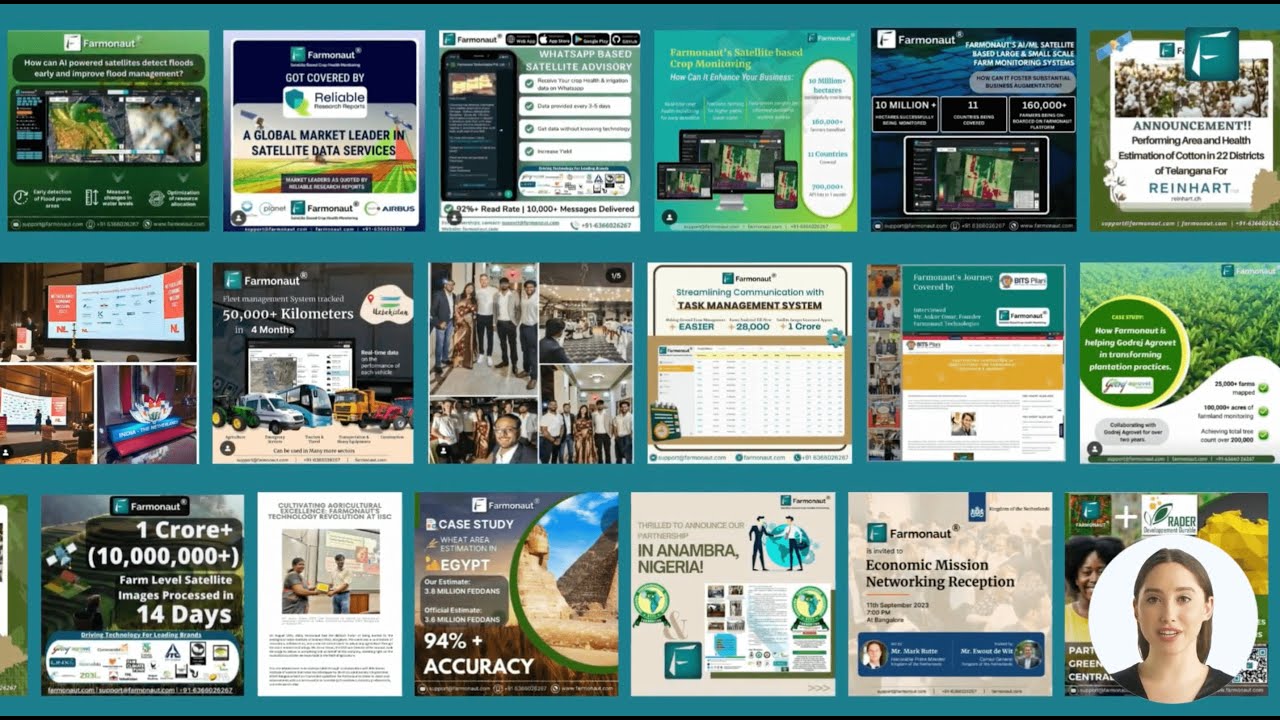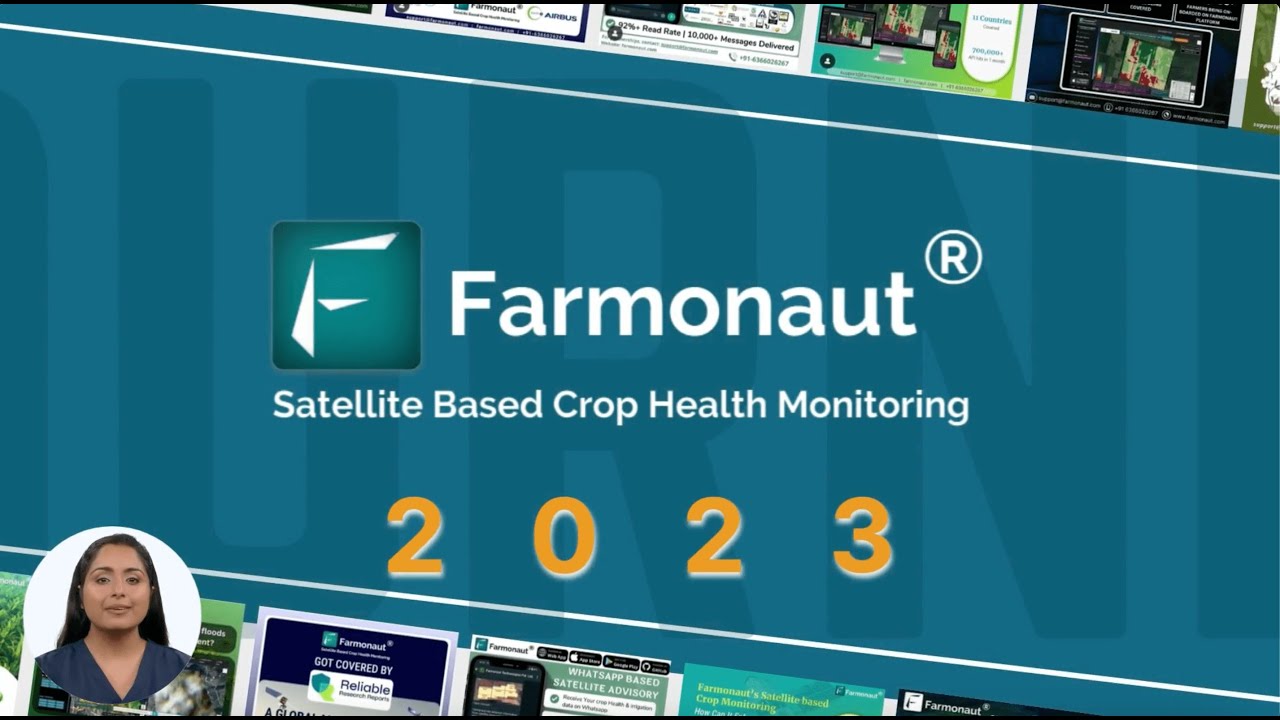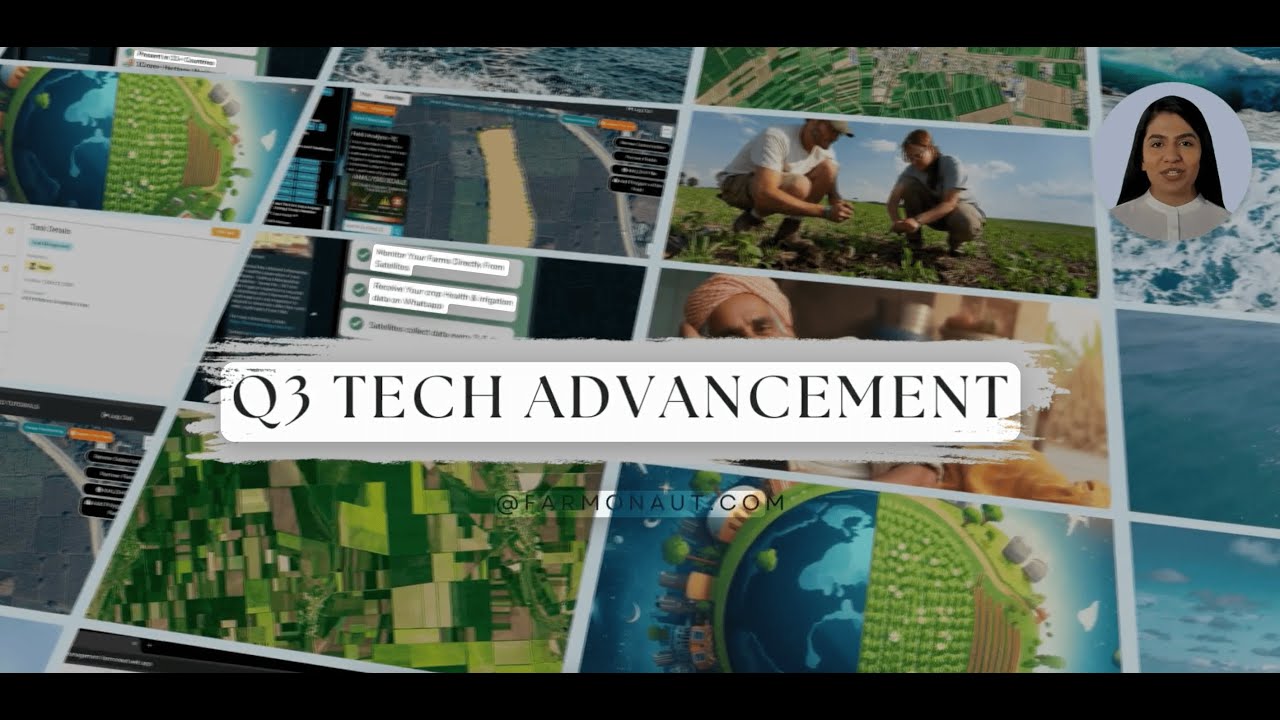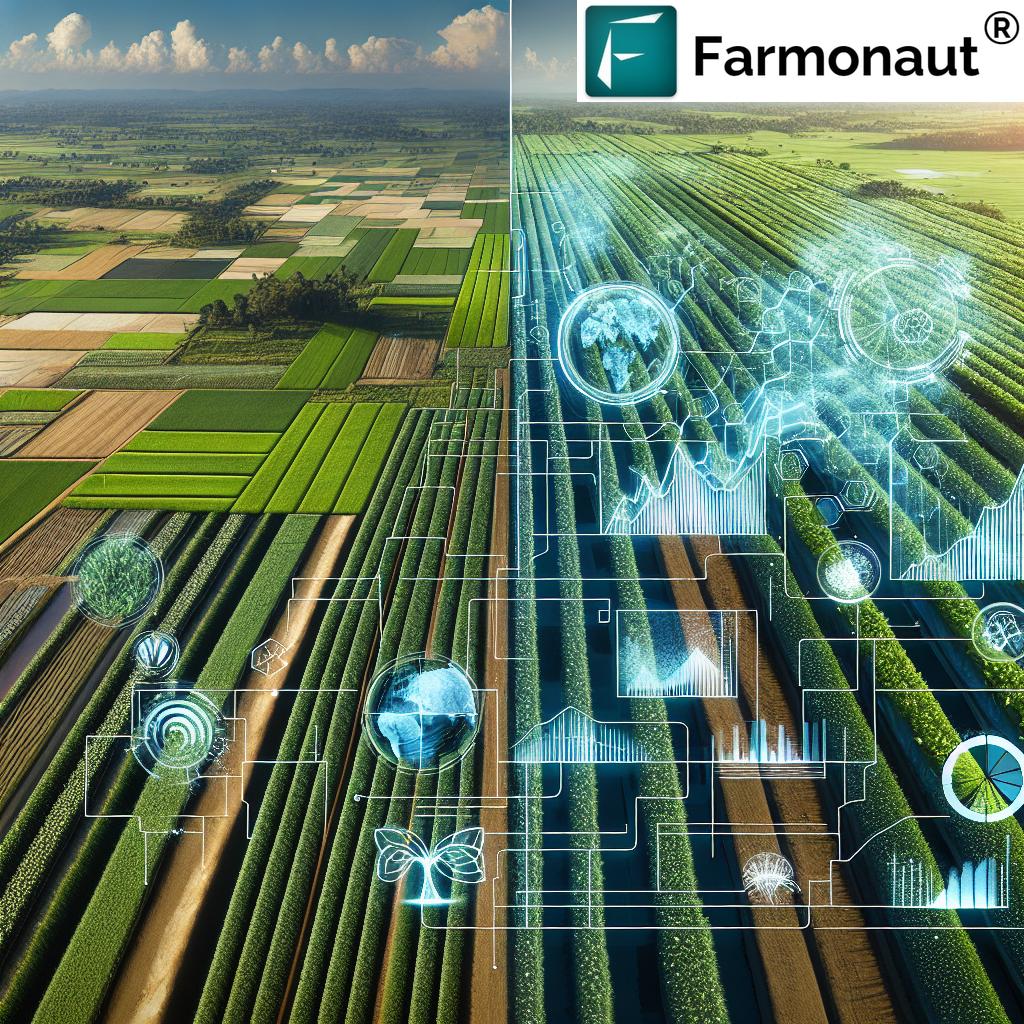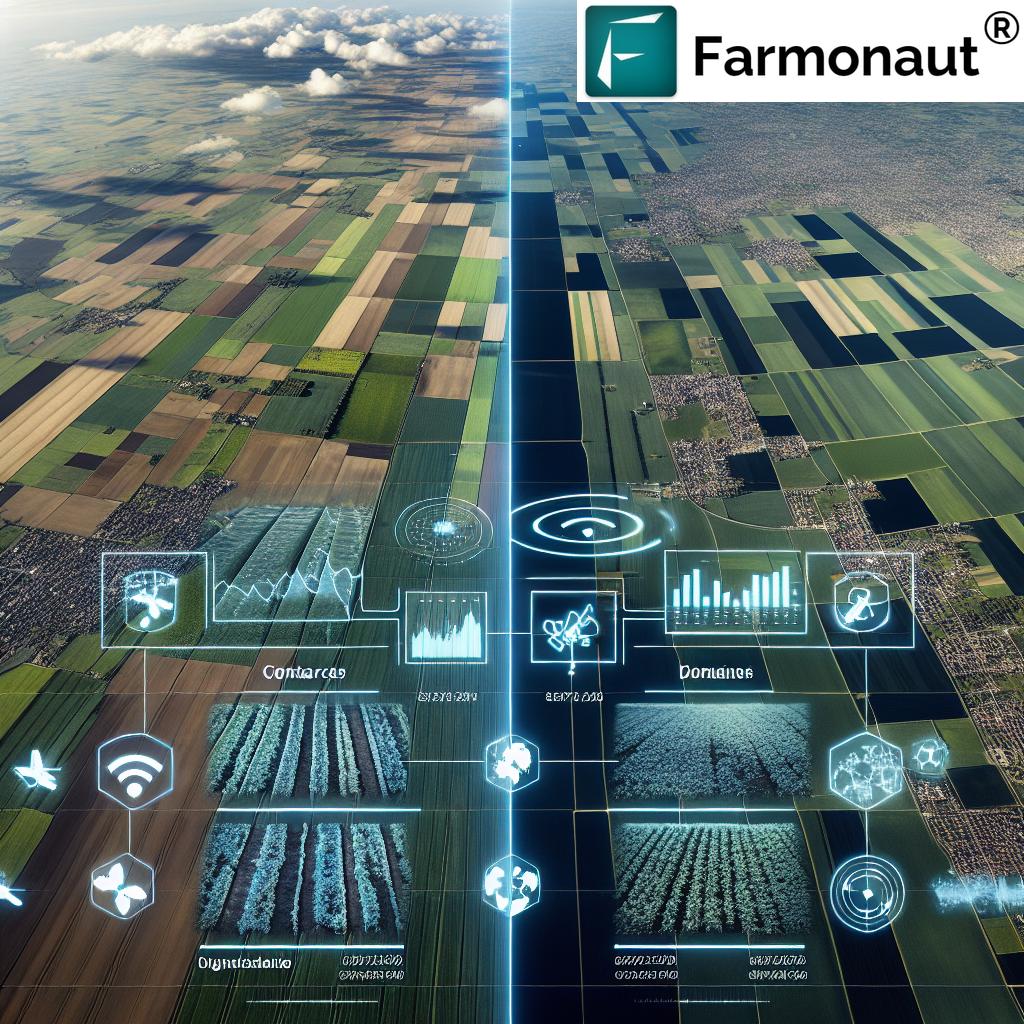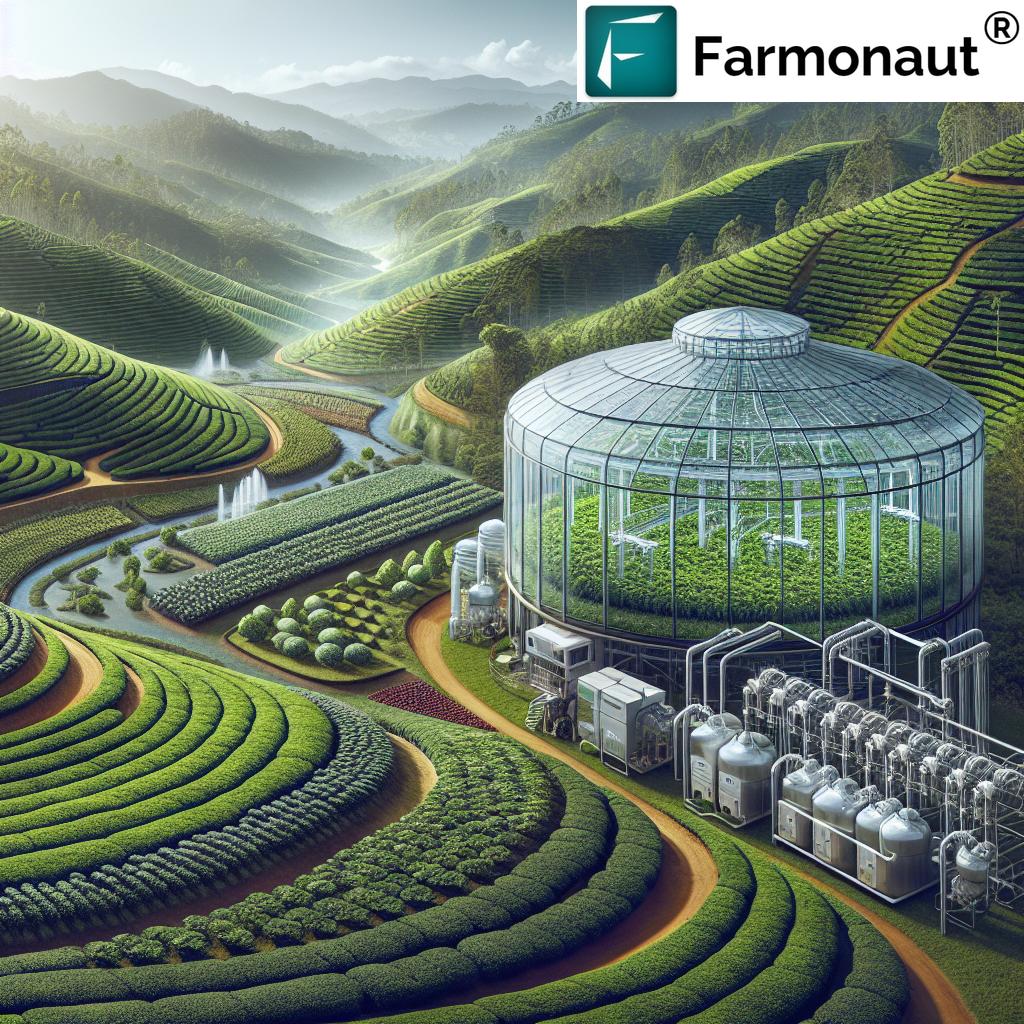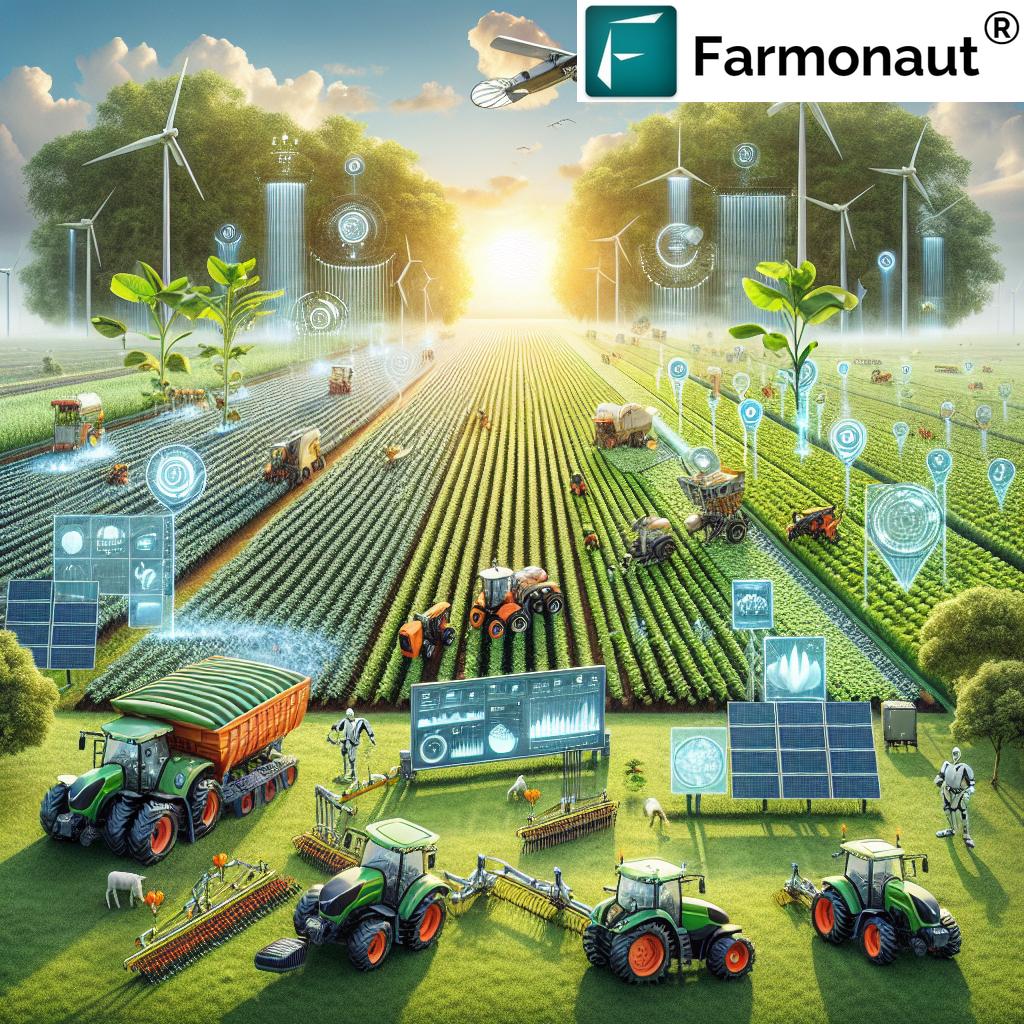South Korea’s Agricultural Transformation: Tackling Rural Crisis and Boosting Growth
“South Korea’s agricultural exports have shown impressive growth, contributing to the sector’s transformation as a new economic engine.”
In the heart of East Asia, South Korea is embarking on an ambitious journey to revolutionize its agricultural sector. As we delve into this comprehensive transformation, we’ll explore how the Land of the Morning Calm is addressing pressing rural challenges while simultaneously cultivating new opportunities for growth. From combating population decline to embracing cutting-edge technologies, South Korea’s agricultural metamorphosis is a testament to innovation and resilience in the face of adversity.
The Rural Crisis: A Call for Action
South Korea’s rural areas have long been the backbone of its agricultural prowess. However, in recent years, these regions have faced a mounting crisis that threatens not only the agricultural sector but the very fabric of rural society. Let’s examine the key issues at play:
- Demographic Decline: The exodus of younger generations to urban centers has left many rural communities struggling with an aging population.
- Climate Change Impacts: Shifting weather patterns and extreme events pose significant risks to crop yields and farm sustainability.
- Economic Pressures: Farmers grapple with rising production costs and market volatility, challenging their financial stability.
These challenges have necessitated a comprehensive strategy to revitalize rural areas and transform the agricultural sector. The Ministry of Agriculture, Food and Rural Affairs has stepped up with a multifaceted approach to address these issues head-on.
Enhancing Rural Medical Infrastructure: A Lifeline for Communities
One of the cornerstones of South Korea’s rural revitalization efforts is the significant enhancement of medical infrastructure in rural areas. This initiative aims to bridge the healthcare gap between urban and rural regions, making rural living more attractive and sustainable.
- Telemedicine Expansion: Leveraging technology to provide remote medical consultations and care.
- Mobile Health Units: Deploying mobile clinics to reach isolated communities and provide essential healthcare services.
- Rural Hospital Upgrades: Investing in modernizing existing rural hospitals with state-of-the-art equipment and facilities.
By improving access to quality healthcare, the government aims to not only enhance the quality of life for current rural residents but also to attract younger families back to these areas.
Boosting Farmers’ Welfare: The Heart of Agricultural Transformation
At the core of South Korea’s agricultural transformation strategy is a commitment to improving farmers’ welfare. Recognizing that a thriving agricultural sector depends on the well-being of its primary workforce, the government has implemented several measures:
- Income Support Programs: Introducing subsidies and direct payments to stabilize farmers’ incomes.
- Educational Initiatives: Providing training and workshops on modern farming techniques and business management.
- Social Safety Net Expansion: Strengthening pension and insurance schemes tailored for the agricultural community.
These initiatives aim to create a more secure and attractive environment for both current farmers and those considering a career in agriculture.
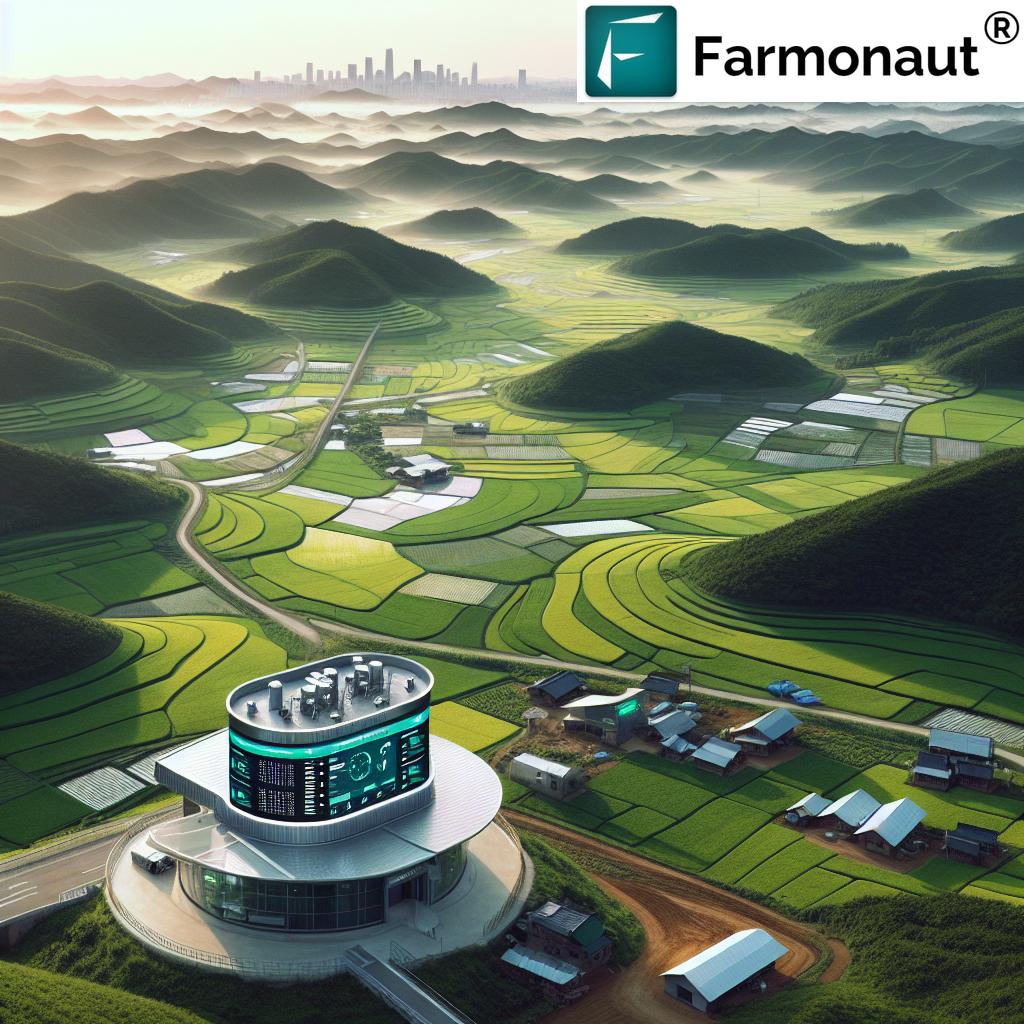
Ensuring Food Supply Stability: A Focus on Rice Production
Rice, a staple in Korean cuisine and culture, remains a critical focus in the country’s agricultural policy. Amid changing demographic and environmental conditions, South Korea is implementing strategies to maintain and enhance its rice production capabilities:
- Climate-Resilient Varieties: Investing in research and development of rice varieties that can withstand extreme weather conditions.
- Smart Farming Technologies: Introducing precision agriculture techniques to optimize rice cultivation and resource use.
- Storage and Distribution Improvements: Upgrading infrastructure to ensure efficient storage and distribution of rice crops.
These efforts aim to secure a stable food supply for the nation while adapting to the challenges posed by climate change and shifting consumption patterns.
Agricultural Export Growth: Cultivating New Markets
South Korea’s agricultural sector has witnessed impressive export growth in recent years, emerging as a new engine for economic development. This success is attributed to several factors:
- Quality Control Measures: Implementing rigorous standards to ensure the high quality of exported agricultural products.
- Market Diversification: Exploring new international markets and tailoring products to meet global demand.
- Value-Added Products: Focusing on processed and specialty agricultural goods that command premium prices in international markets.
The government’s proactive approach in supporting exporters and promoting Korean agricultural products abroad has been instrumental in this growth trajectory.
Taming Agricultural Inflation: A Balancing Act
“Recent government efforts have successfully tamed inflation for agricultural products in South Korea, benefiting both farmers and consumers.”
Managing agricultural inflation has been a critical aspect of South Korea’s agricultural policy. Recent successes in this area have yielded benefits for both producers and consumers:
- Price Stabilization Measures: Implementing policies to prevent sudden price spikes in essential agricultural commodities.
- Supply Chain Optimizations: Streamlining distribution channels to reduce intermediary costs and improve market efficiency.
- Consumer Protection Initiatives: Ensuring fair pricing and quality standards for agricultural products in the domestic market.
These efforts have contributed to a more stable and predictable market environment, fostering confidence among farmers and consumers alike.
Transforming Agriculture into a New Growth Engine
South Korea’s vision extends beyond addressing immediate challenges; it aims to position agriculture as a key driver of future economic growth. This transformation involves several innovative approaches:
- Agri-Tech Innovations: Encouraging the development and adoption of cutting-edge agricultural technologies.
- Sustainable Farming Practices: Promoting eco-friendly and resource-efficient farming methods.
- Rural Tourism: Developing agri-tourism initiatives to create new revenue streams for rural communities.
By diversifying the agricultural sector and embracing innovation, South Korea is laying the groundwork for a more resilient and dynamic rural economy.
Creating Opportunities in Rural Areas
A crucial aspect of South Korea’s agricultural transformation is the creation of new opportunities in rural areas to attract younger generations and revitalize local economies:
- Start-up Incubators: Establishing rural innovation centers to support agri-tech startups and young entrepreneurs.
- Digital Infrastructure: Investing in high-speed internet and digital technologies to enable remote work and smart farming practices.
- Cultural Revitalization: Supporting local festivals, art initiatives, and cultural events to enhance the appeal of rural living.
These initiatives aim to redefine rural areas as vibrant hubs of innovation and opportunity, challenging the traditional perceptions of rural life.
Building a Robust Social Safety Net for Rural Communities
Recognizing the unique challenges faced by rural populations, South Korea is committed to strengthening the social safety net for these communities:
- Tailored Welfare Programs: Developing social support systems that address the specific needs of rural residents.
- Community Support Networks: Facilitating the creation of local support groups and community-based care systems.
- Rural Education Enhancement: Improving educational facilities and opportunities in rural areas to support lifelong learning and skill development.
These measures aim to create a more inclusive and supportive environment for all members of rural communities, regardless of age or economic status.
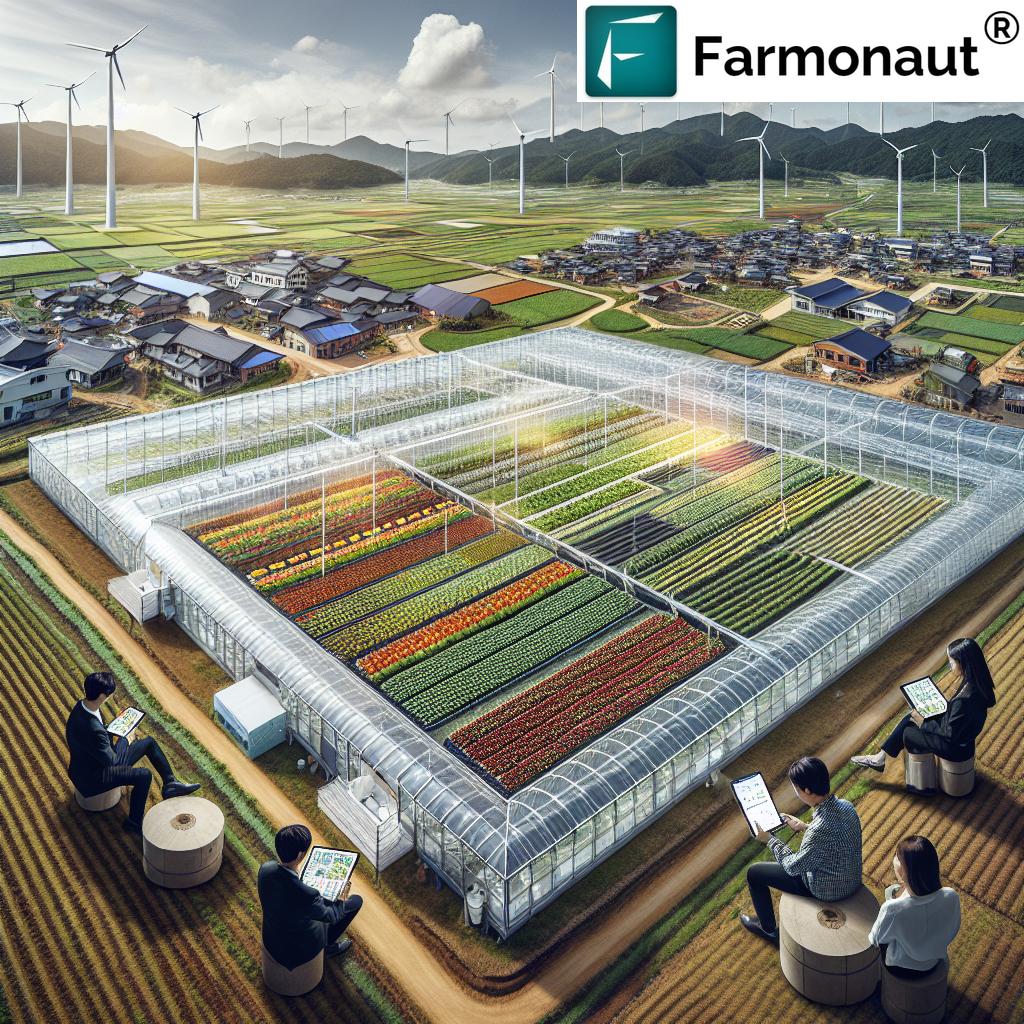
Addressing Climate Change Impact on Agriculture
Climate change poses significant challenges to South Korea’s agricultural sector, necessitating adaptive strategies and mitigation efforts:
- Climate-Smart Agriculture: Promoting farming practices that are resilient to changing weather patterns and reduce greenhouse gas emissions.
- Water Management Systems: Implementing advanced irrigation and water conservation techniques to combat drought and flood risks.
- Crop Diversification: Encouraging farmers to grow a variety of crops to reduce vulnerability to climate-related crop failures.
These initiatives demonstrate South Korea’s commitment to sustainable agriculture in the face of global environmental challenges.
Leveraging Technology for Agricultural Advancement
Technology plays a pivotal role in South Korea’s agricultural transformation. The country is at the forefront of integrating cutting-edge technologies into farming practices:
- AI and IoT in Farming: Implementing artificial intelligence and Internet of Things devices for precision agriculture and automated farm management.
- Drone Technology: Utilizing drones for crop monitoring, pesticide application, and yield estimation.
- Big Data Analytics: Harnessing data-driven insights for improved decision-making in crop selection, resource allocation, and market forecasting.
These technological advancements are not only improving productivity but also making agriculture more appealing to tech-savvy younger generations.
Sustainable Rural Development: A Holistic Approach
South Korea’s strategy for sustainable rural development encompasses a wide range of interconnected initiatives:
- Eco-Friendly Infrastructure: Developing green buildings and renewable energy projects in rural areas.
- Circular Economy Practices: Promoting recycling and waste reduction in agricultural processes.
- Biodiversity Conservation: Implementing measures to protect local ecosystems and promote biodiversity in rural landscapes.
This holistic approach ensures that rural development aligns with global sustainability goals while enhancing the quality of life for rural residents.
The Role of Public-Private Partnerships
Collaboration between the government and private sector is crucial in driving South Korea’s agricultural transformation:
- Research and Development: Joint initiatives between universities, research institutions, and private companies to develop innovative agricultural solutions.
- Investment in Rural Enterprises: Government incentives to encourage private investment in rural businesses and agricultural startups.
- Market Access Facilitation: Partnerships to improve market access for small-scale farmers and rural producers.
These collaborative efforts are essential in bridging resource gaps and accelerating the pace of agricultural innovation.
Agricultural Sector Growth Strategies: A Forward-Looking Approach
South Korea’s long-term vision for agricultural sector growth encompasses several key strategies:
- Value Chain Integration: Strengthening links between producers, processors, and retailers to create a more efficient and profitable agricultural ecosystem.
- International Cooperation: Engaging in knowledge exchange and collaborative projects with global agricultural leaders.
- Human Capital Development: Investing in education and training programs to build a skilled workforce for the future of agriculture.
These strategies aim to position South Korea as a global leader in innovative and sustainable agriculture.
The Future of South Korean Agriculture: Challenges and Opportunities
As South Korea continues its agricultural transformation journey, it faces both challenges and opportunities:
- Aging Farmer Population: Addressing the demographic shift and attracting younger generations to agriculture.
- Global Market Competition: Maintaining competitiveness in international markets amid increasing global agricultural trade.
- Technological Adaptation: Ensuring widespread adoption of new technologies across diverse farming communities.
By proactively addressing these challenges, South Korea can turn them into opportunities for innovation and growth in the agricultural sector.
South Korea’s Agricultural Transformation Key Metrics
| Metric | Past (est. 2015) | Present (est. 2023) | Future Goal (est. 2030) |
|---|---|---|---|
| Rural Population (% of total) | 18% | 15% | 20% |
| Agricultural Exports (billion USD) | 5.5 | 8.2 | 12.0 |
| Rice Production (million tonnes) | 4.2 | 3.8 | 4.5 |
| Agricultural Inflation Rate (%) | 3.5% | 2.1% | 1.5% |
| Rural Medical Facilities (per 100,000 residents) | 25 | 35 | 50 |
| Farmers’ Average Income (million KRW) | 32 | 42 | 60 |
| Climate-Resilient Crop Varieties (number) | 10 | 25 | 50 |
| Smart Farm Adoption Rate (%) | 5% | 15% | 40% |
Conclusion: A New Era for South Korean Agriculture
South Korea’s comprehensive approach to agricultural transformation is setting a new standard for rural development and sector growth. By addressing the rural crisis head-on, enhancing farmer welfare, ensuring food supply stability, and embracing technological innovation, the country is paving the way for a more resilient and prosperous agricultural future.
As we’ve explored throughout this blog, the challenges are significant, but so are the opportunities. With continued commitment to sustainable practices, technological adoption, and community support, South Korea is poised to redefine the role of agriculture in its economy and society.
The journey of transformation is ongoing, and the world will be watching as South Korea continues to innovate and lead in agricultural development. As we look to the future, it’s clear that the seeds of change planted today will yield a bountiful harvest for generations to come.
FAQ Section
Q: What are the main challenges facing South Korea’s agricultural sector?
A: The main challenges include rural population decline, climate change impacts, economic pressures on farmers, and the need for technological adaptation in farming practices.
Q: How is South Korea addressing the rural population crisis?
A: South Korea is enhancing rural medical infrastructure, improving farmers’ welfare, creating new economic opportunities in rural areas, and strengthening the social safety net for rural communities.
Q: What role does technology play in South Korea’s agricultural transformation?
A: Technology is crucial, with initiatives focused on AI, IoT, drone technology, and big data analytics to improve farming efficiency, productivity, and sustainability.
Q: How is South Korea ensuring food supply stability, especially in rice production?
A: The country is developing climate-resilient rice varieties, implementing smart farming technologies, and improving storage and distribution systems to maintain stable rice production.
Q: What measures is South Korea taking to combat the effects of climate change on agriculture?
A: South Korea is promoting climate-smart agriculture, implementing advanced water management systems, and encouraging crop diversification to enhance resilience to climate change.
For those interested in leveraging technology for agricultural advancement, Farmonaut offers innovative solutions to enhance farm management and productivity. Our platform provides valuable insights through satellite-based crop health monitoring and AI-driven advisory systems.
Explore our services:
- Farmonaut API for integrating satellite and weather data into your systems
- API Developer Docs for detailed information on implementation
Download our mobile apps for on-the-go farm management:


